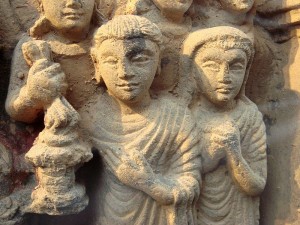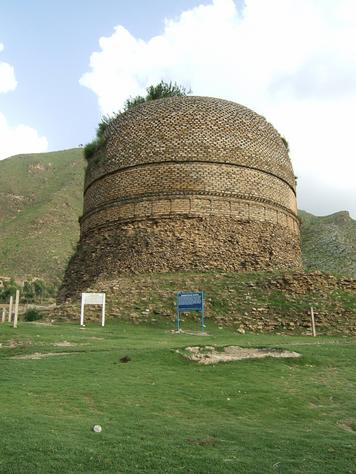|
||||||||||||||||||||
What Will Happen to Ancient Art in the Taliban's Swat?
February 20, 2009

This week, Taliban forces in the mountainous region of Swat in northwestern
Pakistan, claimed a worrying victory. For more than two years now, these forces,
led by a ruthless 28-year-old radical cleric, Maulana Fazllulah, have fought
a bloody guerilla war. They have brutally kidnapped leading opponents, murdered
police officials, and bombed girls' schools. Desperate to end the anarchy
and violence, Pakistan's government has now struck a peace deal with the de
facto Taliban rulers of the region. Pakistan will permit Fazllulah to impose
Shariah law in Swat.
What does this have to do with archaeology, you might ask? Well, actually quite a lot. For centuries, the Swat River valley was a Buddhist haven. According to tradition, Buddha himself journeyed to Swat during his last reincarnation, and preached to the local villagers. And by the 6th-century A.D, Buddhist pilgrims from as far away as China flocked to the Swat valley, a beautiful lush land of orchards and rushing mountain streams. One early Chinese account describes as many as 1400 Buddhist monasteries perched along the valley walls in the 7th century.
Devout Buddhist artists left an incredibly rich legacy in Swat. Since the valley lay along a major route of the Silk Road—which stretched from China to the Mediterranean—they were greatly influenced by ideas from elsewhere, and gracefully blended foreign styles in their art. They chiseled beautiful, haunting statues of Buddha into the cliffsides, and left many stupas and other Buddhist relics scattered across the countryside.

The region's new Taliban rulers regard this legacy, and particularly the images of Buddha, as an affront to Islam, and they have already taken action against them. In 2008, they set off dynamite charges to erase the face of a 23-foot-high Buddha carved into a cliff near Jehanabad in the Swat River valley, an act of terrible vandalism that recalled the destruction of the Bamiyan Buddhas by Afghanistan's Taliban. In a separate attack, they badly damaged parts of the Swat Museum—which which holds an important collection of Buddhist art—and issued threats to the staff of the museum.

None of this, of course, bodes well for the fate of the Swat's rich cultural legacy in years to come. But the international community was outraged by the destruction of the Bamiyan Buddhas, and in 2003, UNESCO issued a "Declaration concerning the Intentional Destruction of Cultural Heritage. In part, this declaration stipulates that "States should take all appropriate measures to prevent, avoid, stop and suppress acts of intentional destruction of cultural heritage…. "
Pakistan's government is clearly caught between a rock and a hard place now,
with Taliban militants breathing down its neck, less than 100 miles from Islamabad.
But I, like many others, sincerely hope that it will not abandon its responsibility
to protect Swat's rich cultural legacy, particularly in these very trying
times.




